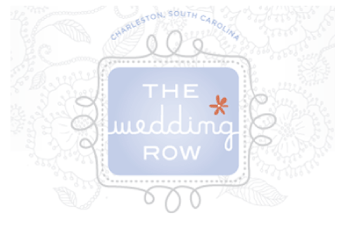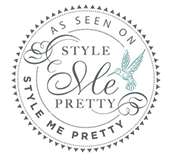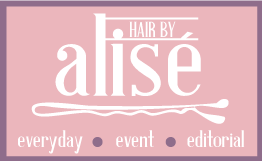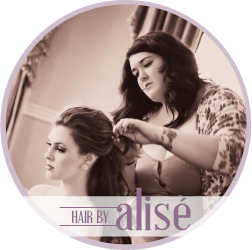The go-to for modern, chic hair, balayage creates depth and dimension, and leaves you with a sun-kissed finish.
What is balayage?
Balayage is a French colouring technique that was developed in the 1970s. It’s a freehand technique where the colour is applied by hand rather than using the traditional foiling or cap highlighting techniques. Balayage can be used in even the shortest pixie crop however the best results is in hair below the shoulders.
Balayage is a French colouring technique that was developed in the 1970s. It’s a freehand technique where the colour is applied by hand rather than using the traditional foiling or cap highlighting techniques. Balayage can be used in even the shortest pixie crop however the best results is in hair below the shoulders.
The appeal
You can achieve so many different effects from soft, natural highlights to something strong and punky. The fact it’s so low maintenance is such a drawcard for women too. People want to look fashionable and feel good about their appearance but in this day and age we don't all have the time to be in the salon every few weeks for a touch up.
You can achieve so many different effects from soft, natural highlights to something strong and punky. The fact it’s so low maintenance is such a drawcard for women too. People want to look fashionable and feel good about their appearance but in this day and age we don't all have the time to be in the salon every few weeks for a touch up.
It’s also a very economical way to color your hair as you never have a solid demarcation line or regrowth, so if you can’t afford to get it done for another month it won't look atrocious. However, if your balayage isn't done correctly you can end up with excessive overlapping that can cause damage.
How it’s done
The process varies depending on the length of the hair and the desired result. You can expect to have individual strands coloured with a brush and a backing board. Some colourists like to separate their sections with cotton wool or foil, others tease the hair in sections first then freehand color the ends.
The process varies depending on the length of the hair and the desired result. You can expect to have individual strands coloured with a brush and a backing board. Some colourists like to separate their sections with cotton wool or foil, others tease the hair in sections first then freehand color the ends.
I find that all my balayage clients are going for different looks and need to maintain it at different rates. You will need to have a minimum of three appointments to really build up the colour initially. These appointments are spaced six weeks apart. From there you could go up to four months without having more balayage. You would just need to come in for a glaze and a treatment to freshen up the color in between appointments.
Is it for me?
Balayage is best done on natural hair, but never fear, most of the work I do to create a balayage look is initially done with foils until the hair is ready to have only balayage. There are many different techniques that people use to create this look. If you’re seeing a color specialist they should always be able to come up with a technique to achieve the look you desire that best suits your hair type and colour history.
Balayage is best done on natural hair, but never fear, most of the work I do to create a balayage look is initially done with foils until the hair is ready to have only balayage. There are many different techniques that people use to create this look. If you’re seeing a color specialist they should always be able to come up with a technique to achieve the look you desire that best suits your hair type and colour history.
The best hairstyles for balayage
I always love to see balayage finished with loose curls or a beachy, tousled look where you can see the colour variations ribbon through the hair. Sharp, strong haircuts like a bob require a stronger color or a block color to show off the cut. Balayage is best left to more flowing hairstyles.
I always love to see balayage finished with loose curls or a beachy, tousled look where you can see the colour variations ribbon through the hair. Sharp, strong haircuts like a bob require a stronger color or a block color to show off the cut. Balayage is best left to more flowing hairstyles.
Top maintenance tips
Balayage will dry your hair out no more than classic foiling as long as you have a trained professional applying your color. As with foils you should always use salon professional shampoos and conditioners as well as have regular treatments. No matter what the technique, your colour will always look its best if your hair is in good condition.
Balayage will dry your hair out no more than classic foiling as long as you have a trained professional applying your color. As with foils you should always use salon professional shampoos and conditioners as well as have regular treatments. No matter what the technique, your colour will always look its best if your hair is in good condition.
Does balayage have an expiry date?
The technique has been around for so long and will remain an integral part of the way we color in the salon for as long as I can foresee. However, the trend at the moment with the heavy graduation from dark to light is constantly changing. It started out about five years ago being very subtle with people like Gisele Bundchen being a favourite. A more natural, sun-kissed effect was desired then. In the last few years we have seen much stronger effects being worn. This winter we have seen the same techniques used but with a warmer, deeper feel. Lots of celebrities have their balayage finished with copper or red glosses and this is now being called the new ombre look.
The technique has been around for so long and will remain an integral part of the way we color in the salon for as long as I can foresee. However, the trend at the moment with the heavy graduation from dark to light is constantly changing. It started out about five years ago being very subtle with people like Gisele Bundchen being a favourite. A more natural, sun-kissed effect was desired then. In the last few years we have seen much stronger effects being worn. This winter we have seen the same techniques used but with a warmer, deeper feel. Lots of celebrities have their balayage finished with copper or red glosses and this is now being called the new ombre look.
Alternatives to balayage
At Elysium Salon, I love to use different foiling techniques to create a more structured, gradual fade out effect. I put more ribbon-sized weaves with a lighter colour through the interior of the hair then I work up to deeper colours and softer weaves as I work up to the hairline and partline. It’s a truly beautiful way to create variation in the colour while maintaining a more structured technique that can be worn in many different styles.
At Elysium Salon, I love to use different foiling techniques to create a more structured, gradual fade out effect. I put more ribbon-sized weaves with a lighter colour through the interior of the hair then I work up to deeper colours and softer weaves as I work up to the hairline and partline. It’s a truly beautiful way to create variation in the colour while maintaining a more structured technique that can be worn in many different styles.























No comments:
Post a Comment